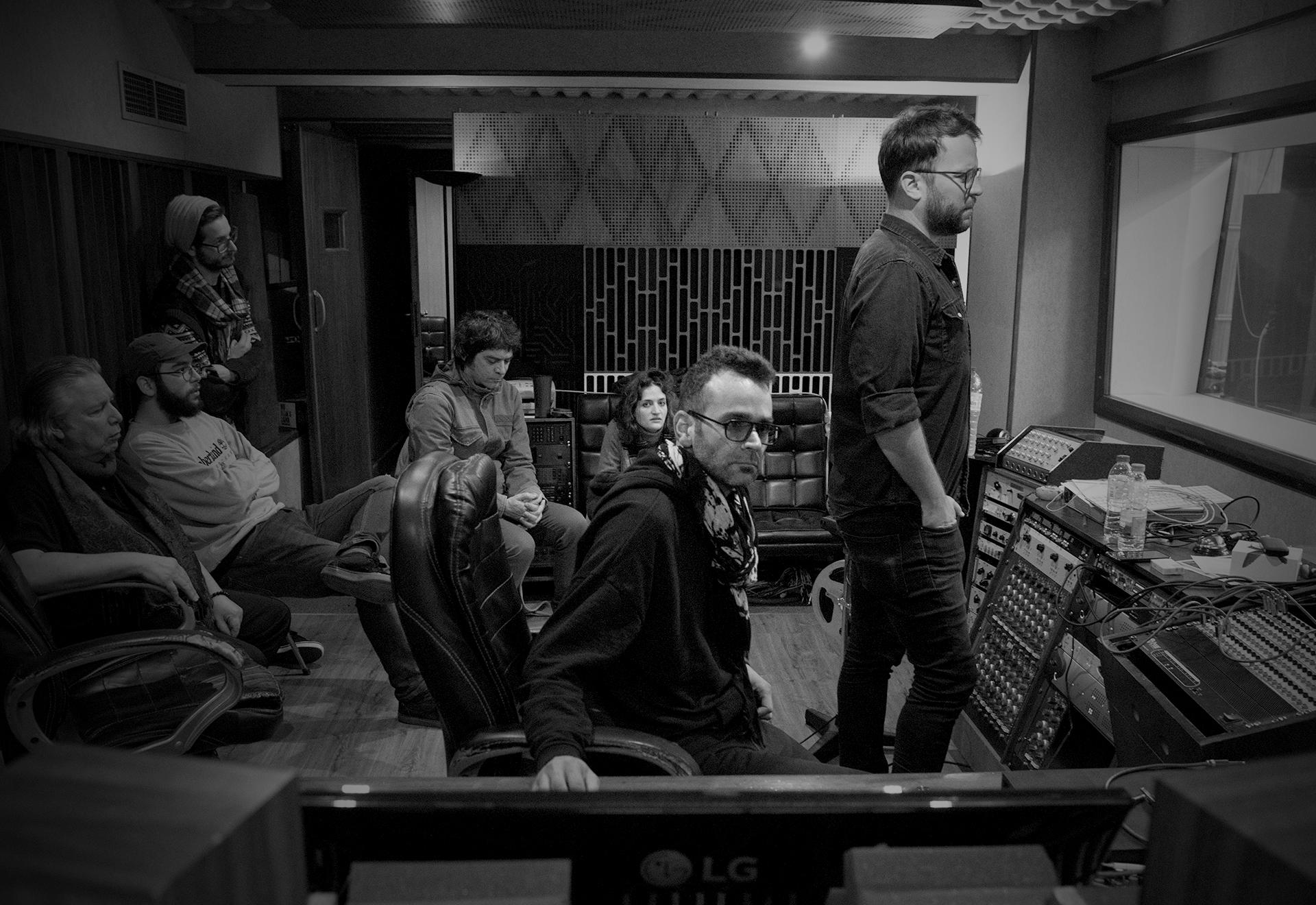Hector Castillo: Exploring Boundaries and Emotion Through Mixing with Sonnox Plug-ins
From David Bowie to Gustavo Cerati, Hector Castillo’s Grammy-winning touch spans the globe and defies musical boundaries.
Born in Venezuela and raised in Boston, Castillo has made Brooklyn his home base since 1995, where he keeps a studio as a creative anchor. Known for his versatile approach, Castillo has worked with a diverse range of artists, from avant-garde composers like Philip Glass and Nico Muhly to bands like Brazilian Girls, Re-Tros, and Los Fabulosos Cadillacs. His ability to illuminate the emotional core of every track he touches has made him a sought-after producer, mixer, and engineer. We caught up with Castillo at his Brooklyn studio to dive into his journey, his craft, and his innovative use of Sonnox plug-ins.

Starting Out in New York: From Classical to Indie
Castillo’s first break came at Philip Glass’s Looking Glass Studio in SoHo, a hub for orchestral sessions and a rotating roster of talented musicians. “I started at the bottom, doing everything from copying scores to assisting on sessions,” he recalls. “I worked my way up to chief engineer and eventually took over the B room, which had one of the biggest Pro Tools rigs in New York at the time.”
I started at the bottom, doing everything from copying scores to assisting on sessions
During his tenure, Castillo worked on numerous Glass projects, including REWORK_, an album of Glass classics with an electronic twist featuring artists like Beck, Amon Tobin, and Cornelius. After years immersed in the avant-garde classical scene, Castillo was ready for a new challenge. “I wanted to rough things up and explore my own sound, so I crossed the East River to work at Rubber Tracks studio before eventually setting up my own space.”
In-the-Box Workflow with Sonnox Plug-ins
Despite his love for gear, Castillo now mixes entirely in-the-box, finding inspiration in the evolving world of software. “Sonnox plug-ins are my meat and potatoes—they’re straightforward and incredibly powerful,” he says. Castillo’s workflow is all about harnessing the flexibility and precision of digital tools to enhance the emotional impact of his mixes.
Mixing Tip: Enhancing Live Recordings with Sonnox Envolution
While mixing an album for the Chilean folk band Gepe, Castillo faced a common challenge: recording all the instruments live in the same room, which led to bleed and a loss of attack on the upright bass, particularly the finger sounds. “Using the Sonnox Envolution, I could bring that attack back and control the room sound. The upright bass doesn’t have a lot of sustain, so I increased the attack and reduced the sustain, effectively lowering the room noise.”
Castillo emphasizes the utility of the Envolution’s Focus control: “It allows me to hone in on specific frequencies—like 400 Hz in this case—and tailor the attack and sustain to save the part and give it warmth. It’s amazing for making big, splashy room sounds even when working with tracks recorded in small spaces.”
Why Sonnox Envolution Stands Out
Castillo appreciates the Envolution’s versatility, especially compared to traditional transient designers. “I have the original SPL unit, but with the SPL, I can’t pinpoint the frequency that reacts best. Envolution lets me target specific frequencies, like in the case of the upright bass amidst a room full of percussion. A normal transient designer wouldn’t be able to isolate that effectively, but with Envolution, I can make it work seamlessly.”
Unique Applications of Sonnox Plug-ins: Natalia Lafourcade’s Musas
For Natalia Lafourcade’s Grammy-winning album Musas, recorded in a house-turned-studio outside Mexico City, Castillo relied on the Oxford EQ for its clean, transparent sound. “The recording setup was minimal—no fancy preamps or outboard EQs—so I used the Oxford EQ on the UAD platform. It allowed me to filter minor imperfections without compromising the beautiful room sound. The EQ was latency-free, which made it perfect for the live recording environment.”
Sonnox’s Secret Weapon: The Oxford Inflator
Castillo is an avid user of the Oxford Inflator, though he admits, “I don’t fully understand what it does, but it’s amazing.” He often starts at 50 percent but finds that even at full capacity, it sounds natural. “It’s just a great fattener—it makes everything stand out.”
He used the Inflator extensively on the soundtrack for La reina del miedo (“The Queen of Fear”), which won World Cinema Dramatic at Sundance. “It was a game-changer on all of the stems, enhancing the emotional impact of the score.”
Creative Freedom and the Joy of Challenges
Castillo thrives on challenges, finding them the most rewarding part of his work. “When I’m handed tracks that aren’t recorded well or have unclear arrangements, that’s when I kick into overdrive. I’m not afraid to mangle, mute, or even add elements—that’s when some of my best mixes happen. I call these transformative mixes.”
Conversely, when he’s working with pristine recordings and performances that align perfectly with his taste, Castillo takes a more conservative approach. “I want to be respectful of what’s already there, but that sometimes means taking fewer risks.”
As a producer, Castillo prioritizes capturing great performances over perfect sounds. “If the performance is amazing, you’ll fall in love with the sound regardless. It’s the emotional connection that draws us in, and that’s what I’m always striving to capture.”
What’s Next for Hector Castillo?
Castillo’s next adventure takes him to South America, where he will be producing MTV Unplugged sessions in Brazil and Argentina. As always, he’s excited by the prospect of new challenges and the opportunity to continue pushing the boundaries of his craft.
